Have you noticed your kitchen sink filling with water when trying to wash dishes? Or maybe your bathroom sink fills to the brim every time you brush your teeth. Neither of these situations is normal ? and they’re likely very frustrating! Kitchen and bathroom sinks can experience clogs quite easily due to the multitude of items and grooming supplies that get washed down the drains, ranging from toothpaste and hair to cooking oils and leftover food. So if you find yourself with a clogged sink, what should you do?
Instead of calling a plumber, we have a few natural (and easy) steps you can take to try to unstop the sink yourself. Try one of these five methods for unclogging your bathroom or kitchen sink.
1. Baking Soda and Vinegar
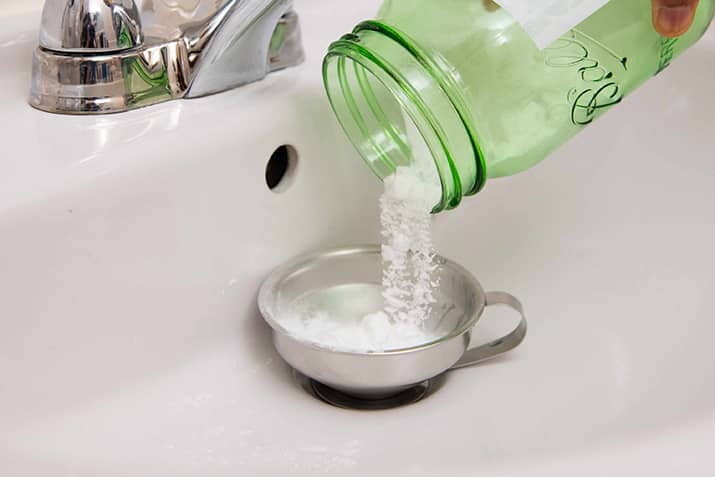
If you find yourself Googling “how to unclog a sink” you’re going to come across the tried-and-true baking soda and vinegar method. This effective solution has proven itself as an easy way to unclog a sink without using harsh chemicals like Drano.
Mix together ? cup of baking soda and ? vinegar to create a slightly fizzy solution. Immediately pour the mixture down the stopped drain so the fizzing action can effectively eat away at the grime and buildup in the drain. Allow the baking soda and vinegar solution to sit in the drain for about an hour before flushing it out with hot water. In some instances, you may need to flush the drains with boiling water afterward to remove larger clogs.
While this method does not have a 100% success rate, trying this method once or twice usually resolves the issue. If not, there are several other natural remedies you can try before calling for professional assistance.
2. Baking Soda and Salt
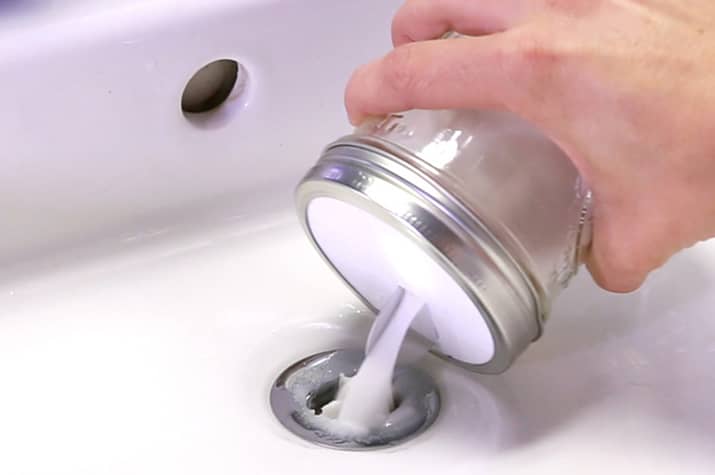
We love easy solutions that utilize items that most households already have in their pantry. If the baking soda and vinegar solution didn’t work for you (or you don’t have those items on hand), we recommend trying another effective solution ? baking soda and salt.
In a bowl, combine ½ cup baking soda and ½ cup salt. Pour this mixture into the drain and allow it to sit in the drain for about 15 minutes. After 15 minutes have passed, pour boiling water down the drain. The combination of boiling water, baking soda, and salt will have a chemical reaction within the drains and, as a result, unclog your bathroom or kitchen sink.
3. Boiling Water
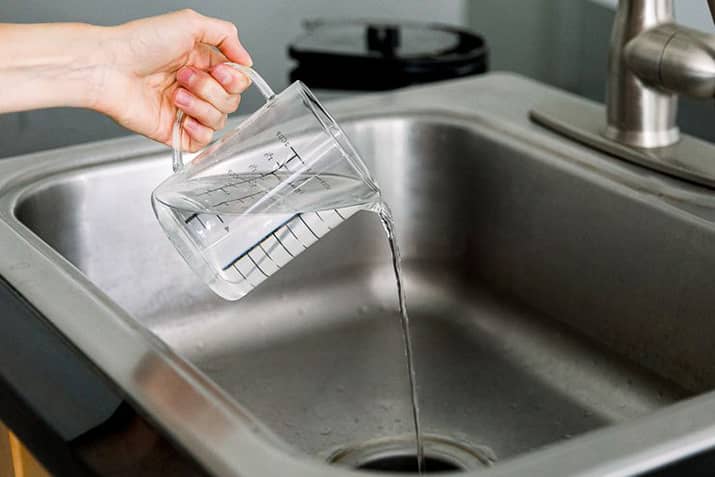
Sometimes the solution is as simple as boiling water. Whether you don’t have baking soda, vinegar, and salt on hand or you’re looking for the easiest solution, we recommend trying boiling water ? especially if you’re looking for how to unclog a bathroom sink that may be blocked by soap residue.
Boiling water works best at unstopping a sink when you’re experiencing slow draining and not a full blockage that causes a sink full of water. To see if this method will work for you, boil water on the stove or in an electric kettle. Once the water has reached a boil, pour the water directly down the drain. Repeat this process two to three times. If after two or three attempts you don’t see a noticeable difference, another method may be more effective at unclogging the sink.
4. Plunger
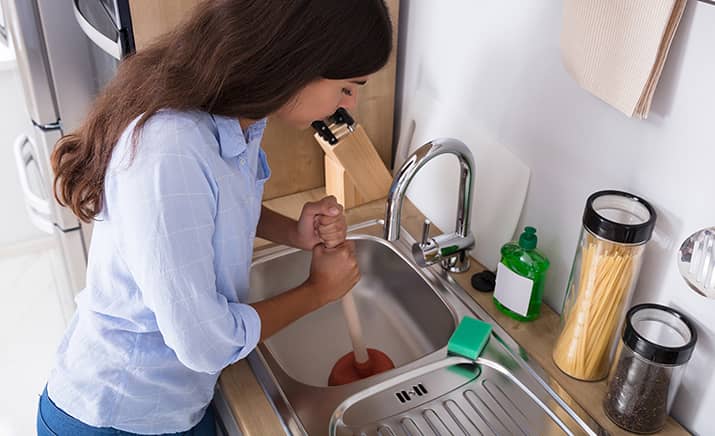
You may find that you need a bit more than a simple solution that gets poured down the drain. That’s when it may be time to bring in your plunger as a reinforcement. While flat-bottomed plungers are the preferred tool for unclogging a sink, most households have a toilet plunger and that can be used to get the job done effectively.
To begin, fill the clogged sink with hot water until it’s half full. Then, place the plunger over the drain and begin pumping quickly for at least 20 seconds. Every now and then you will want to remove the plunger to see if the water has started draining. Repeat the process of pumping the plunger up and down over the seal until the water runs freely down the drain. If you find that the plunger isn’t making a difference with the clog, it may be time to consider another option.
5. Plumber’s Snake
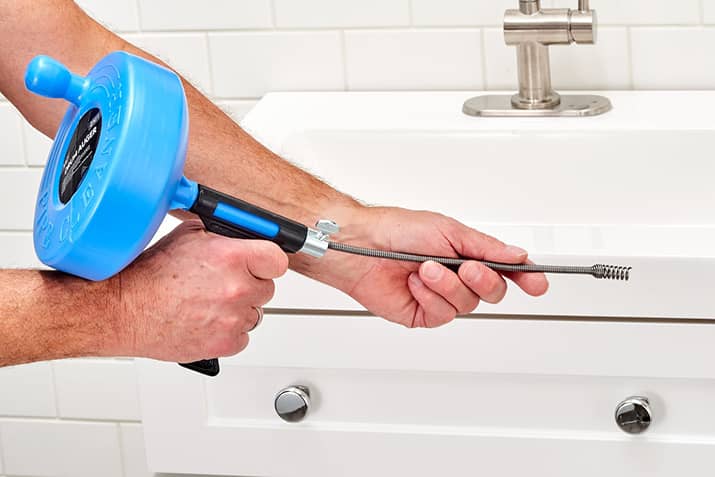
While you likely don’t have a plumber’s snake simply lying around, this tool can be good to keep on hand for situations like this. If the clog is too large to be remedied by one of the natural solutions we covered earlier, you may need to opt for a plumber’s snake to reach down into the drain and remove the blockage. The coiled snake can be snaked through the drain and when a blockage is found, you can use the handle to dislodge the grime and pull it out of the drain.
However, we understand that not everyone has a plumber’s snake on hand. As an alternative, you can create a makeshift plumber’s snake with a wire coat hanger. Use pliers to unwind the hanger into a long piece of wire. The hooked end of the wire hanger will be used to grab onto the debris and remove it from the drain.
If you’ve tried a number of these methods and you haven’t been able to unclog your bathroom or kitchen sink, there may be a larger problem. We recommend calling your local plumber for a professional opinion.
Frequently Asked Questions
Why is my sink suddenly clogged?
Sometimes clogged drains slowly worsen over time. However, sometimes your kitchen sink may appear clogged out of nowhere. Kitchen sink drains can easily become clogged from cooking grease or starchy foods such as pasta or rice that expand in water. It’s important to resolve a clogged drain at the first sign of a problem to avoid it from worsening and becoming a costly problem down the line.
??How do I prevent future sink clogs?
Now that we’ve covered how to unclog a sink drain, it’s important to understand what steps you can take to prevent future sink clogs from happening again. Avoid putting the following items down the drain:
- Grease, fats, and oils
- Eggshells
- Meat
- Coffee grounds
- Pasta, rice, or bread
- Fruit peels, pits, and stickers
Opt for throwing these items away in the trash or composting them when applicable to avoid clogging your sink.
Can using Drano make a clogged sink worse?
Although Drano may provide some temporary relief for your clogged sink, it is extremely corrosive to your drains. The heat from the chemicals can put stress on your plumbing and soften or break the pipes. Depending on the condition of your pipes, Drano may result in a costly leak instead of resolving your plumbing problem.
How do you clear a blocked P-trap?
The P-trap is the bend in your kitchen or bathroom drain that contains a pocket of water to block toxic, foul-smelling sewer gasses from traveling through the pipe into your home. However, because of the shape of this part of the plumbing, it can collect debris and leave you with a blocked drain. To clear a clogged P-trap, we recommend placing a small bucket under the trap with the water shut off. Then, use a large wrench to loosen the nut on the base of the trap to disassemble the P-trap. Once removed, you can clean out the grime and dirt inside the P-trap.
The post How to Unclog a Sink: 5 Natural (& Easy) Ways appeared first on Kitchen Cabinet Kings Blog.
